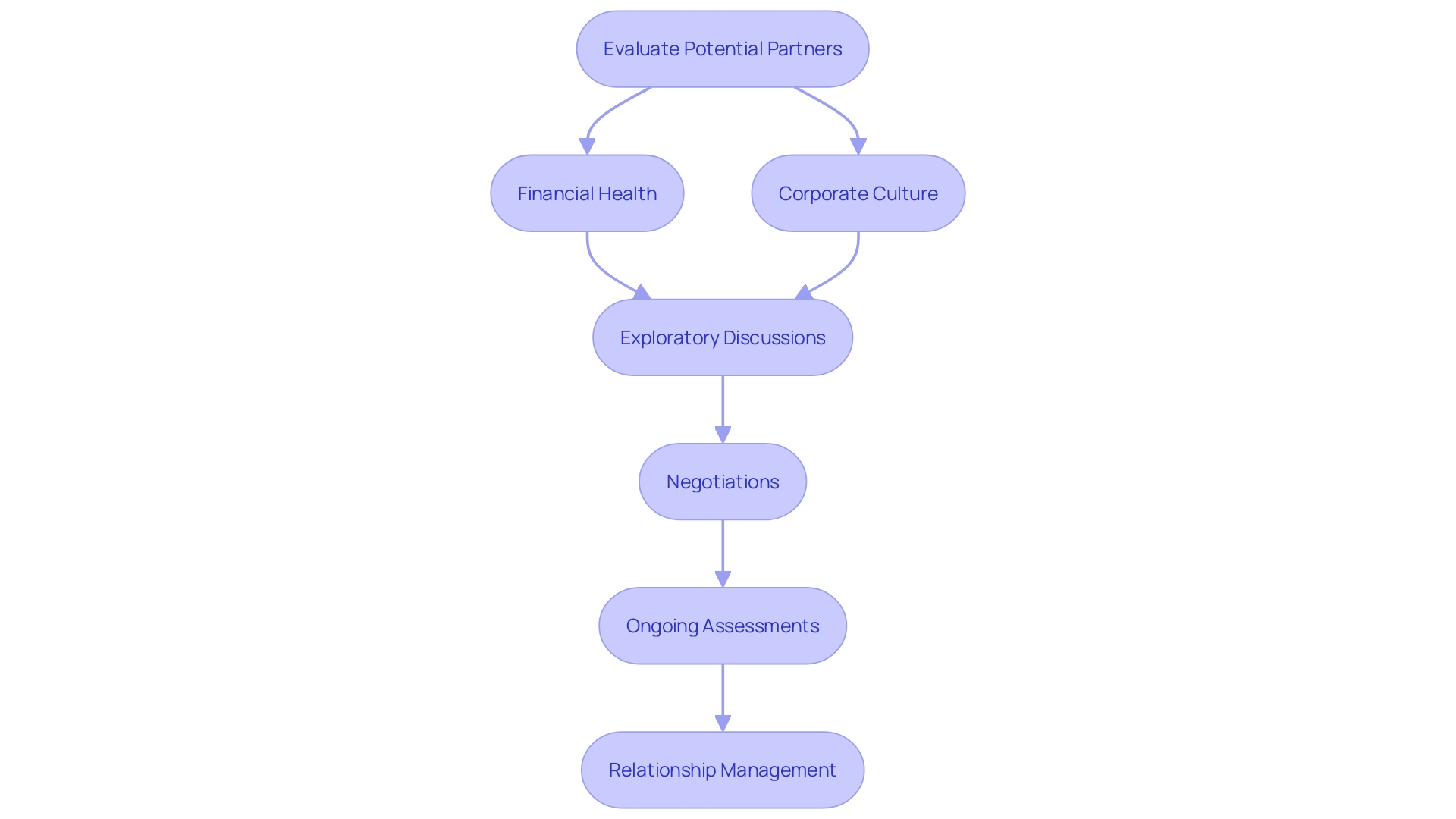The Strategic Alliances of Fuller Partners: Driving Business Growth in 2025

Introduction
In the rapidly evolving business landscape of 2025, strategic alliances are no longer optional—they are essential for organizations seeking sustainable growth, resilience, and competitive advantage. With global markets becoming increasingly interconnected and competition more intense, collaborative partnerships have emerged as one of the most powerful tools for innovation and expansion.
Strategic alliances enable companies to combine resources, share expertise, and access new markets, creating opportunities that would be impossible to achieve independently. Fuller Partners exemplifies this approach, leveraging alliances to expand into new industries, adopt advanced technologies, and overcome limitations related to cost, scale, and speed.
By partnering with firms that already possess established market presence or specialized expertise, businesses can accelerate their growth, strengthen their offerings, and secure a more robust market position. Moreover, these partnerships foster risk-sharing models, allowing organizations to pursue ambitious projects without carrying the burden alone.
From Vodafone and Google Cloud’s cybersecurity innovations to Fuller Partners’ collaborative market strategies, alliances are proving that shared vision and joint investment can fuel both innovation and stability. Strategic partnerships are not just growth mechanisms—they are catalysts for transformation and market leadership.
Understanding the Importance of Strategic Alliances
Strategic alliances are formal partnerships where organizations unite resources, technology, and expertise to achieve shared objectives while maintaining independence. In 2025, their importance has reached new heights as companies seek to navigate complexity, drive digital transformation, and compete globally.
Key Benefits of Strategic Alliances:
-
Market Expansion: By aligning with established players, companies like Fuller Partners quickly enter new geographies and industries without the traditional barriers to entry.
-
Resource Pooling: Capital, technology, and human talent can be shared across partners, reducing individual burdens while increasing innovation speed.
-
Risk Mitigation: Shared investments distribute risks, making ambitious projects feasible.
-
Credibility & Brand Value: Associating with respected partners builds trust and legitimacy in the market.
The collaboration between Vodafone and Google Cloud demonstrates how pooling strengths can create next-generation cyber protection solutions. Similarly, Fuller Partners’ alliances provide not only market access but also the agility to adopt new skills, technologies, and capabilities at scale.
As Chris Khoury of Cheetah Capital states, “There’s no point in reinventing the wheel to grow your business. Instead, seek out strategic partnerships that align with your vision.” Fuller Partners embodies this philosophy by using alliances as a strategic accelerator of growth and innovation.
Key Elements for Successful Strategic Alliances
While the benefits are clear, not all partnerships succeed. Research shows nearly 70% of alliances fail due to misaligned goals, cultural differences, or communication gaps. Fuller Partners has developed best-in-class practices that maximize alliance success.
Essential Elements:
-
Trust & Mutual Benefit: Partnerships thrive when both parties commit to shared value creation.
-
Clear Governance Structures: Defining roles, responsibilities, and decision-making processes reduces conflicts and ensures alignment.
-
Transparent Communication: Open dialogue helps resolve challenges and unlock joint opportunities.
-
Shared Excitement: Both partners must be equally motivated and aligned on the benefits of collaboration.
Examples such as GitLab’s 1,500-employee remote collaboration system highlight how clear rules, shared platforms, and documented processes can make global alliances successful.
By adopting principles of “coopetition” (collaboration between competitors), companies can leverage collective strengths to drive innovation and scale in ways that would be impossible individually.

The Role of Strategic Alliances in Business Growth
Strategic alliances act as growth engines by unlocking access to new markets, emerging technologies, and expanded customer bases. Fuller Partners has effectively leveraged alliances to deliver innovative products, improved services, and operational efficiency.
For example, Colt Technology Services’ expansion into six Asian countries through strategic alliances demonstrates how partnerships can extend reach and reduce barriers to entry. Similarly, Fuller Partners utilizes partnerships to enhance competitiveness while maintaining long-term sustainability.
By pooling resources and collaborating across borders, companies not only achieve faster growth but also build the resilience needed to thrive in uncertain global markets.

Challenges and Solutions in Managing Strategic Alliances
Despite their advantages, alliances present challenges:
-
Misaligned objectives
-
Cultural differences
-
Information asymmetry
-
Geographical distance
Solutions Fuller Partners Implements:
-
Due Diligence: Careful partner evaluation for financial health, cultural compatibility, and operational strengths.
-
Exploratory Discussions: Ensuring alignment before formalizing agreements.
-
Flexible Governance Models: Joint ventures, equity partnerships, or non-equity collaborations tailored to goals.
-
Ongoing Relationship Management: Continuous monitoring and proactive conflict resolution to keep partnerships productive.
As Gen. CQ Brown, Jr. noted, “Collaboration is key to overcoming complex challenges.” Fuller Partners exemplifies this by investing in capacity-building—communication, negotiation, and conflict management—to strengthen alliances long term.
Best Practices for Implementing Strategic Alliances
Organizations seeking to replicate Fuller Partners’ success must adopt structured best practices:
-
Thorough Due Diligence – Evaluate financial health, brand reputation, and cultural fit.
-
Shared Vision Creation – Align objectives, values, and team goals from the outset.
-
Clear Legal & Governance Structures – Define frameworks such as joint ventures or non-equity collaborations.
-
Open Communication Channels – Maintain transparency and problem-solving dialogue.
-
Performance Monitoring – Use measurable KPIs (growth, innovation, customer satisfaction) to track success.
-
Adaptability – Stay flexible to market shifts and emerging opportunities.
Research shows 3,600 new strategic partnerships form every year, with companies in alliances gaining not only access to new customers and technologies but also better financing terms. Fuller Partners leverages these benefits to accelerate innovation while reducing financial risks.
Measuring the Impact of Strategic Alliances
To prove value, alliances must be measured with clear KPIs aligned to business objectives. Metrics include:
-
Revenue growth and ROI
-
Market share expansion
-
Customer acquisition and satisfaction rates
-
Innovation output (new products or patents)
-
Operational efficiency improvements
Studies from Texas McCombs reveal that companies in alliances often secure improved loan conditions, gain better access to capital, and achieve faster scalability. Fuller Partners continuously measures impact, ensuring alliances remain beneficial, adaptive, and future-focused.
Conclusion
In 2025, strategic alliances have evolved from optional strategies to business imperatives. Fuller Partners demonstrates how collaborative partnerships fuel growth, innovation, and long-term sustainability. By pooling resources, sharing expertise, and aligning visions, organizations can tackle complex challenges and seize global opportunities.
Success in alliances depends on trust, mutual benefit, governance, and clear communication. Despite inherent challenges, proactive management, continuous measurement, and best-practice frameworks ensure that partnerships not only survive but thrive.
As business ecosystems become more interconnected, alliances are not just strategies for growth—they are the engines of resilience and transformation. Fuller Partners stands as a prime example of how embracing collaboration can secure market leadership in an ever-changing world.
